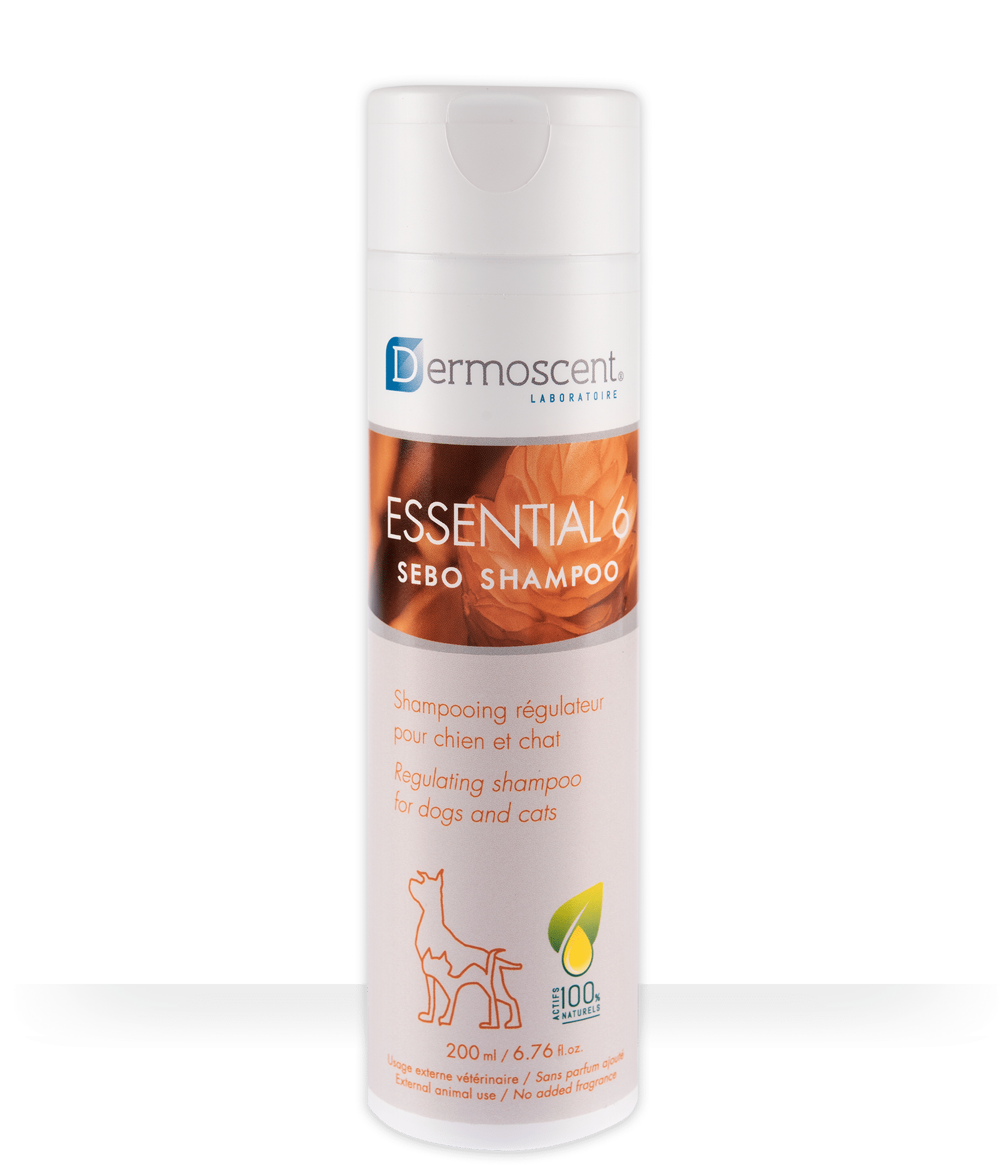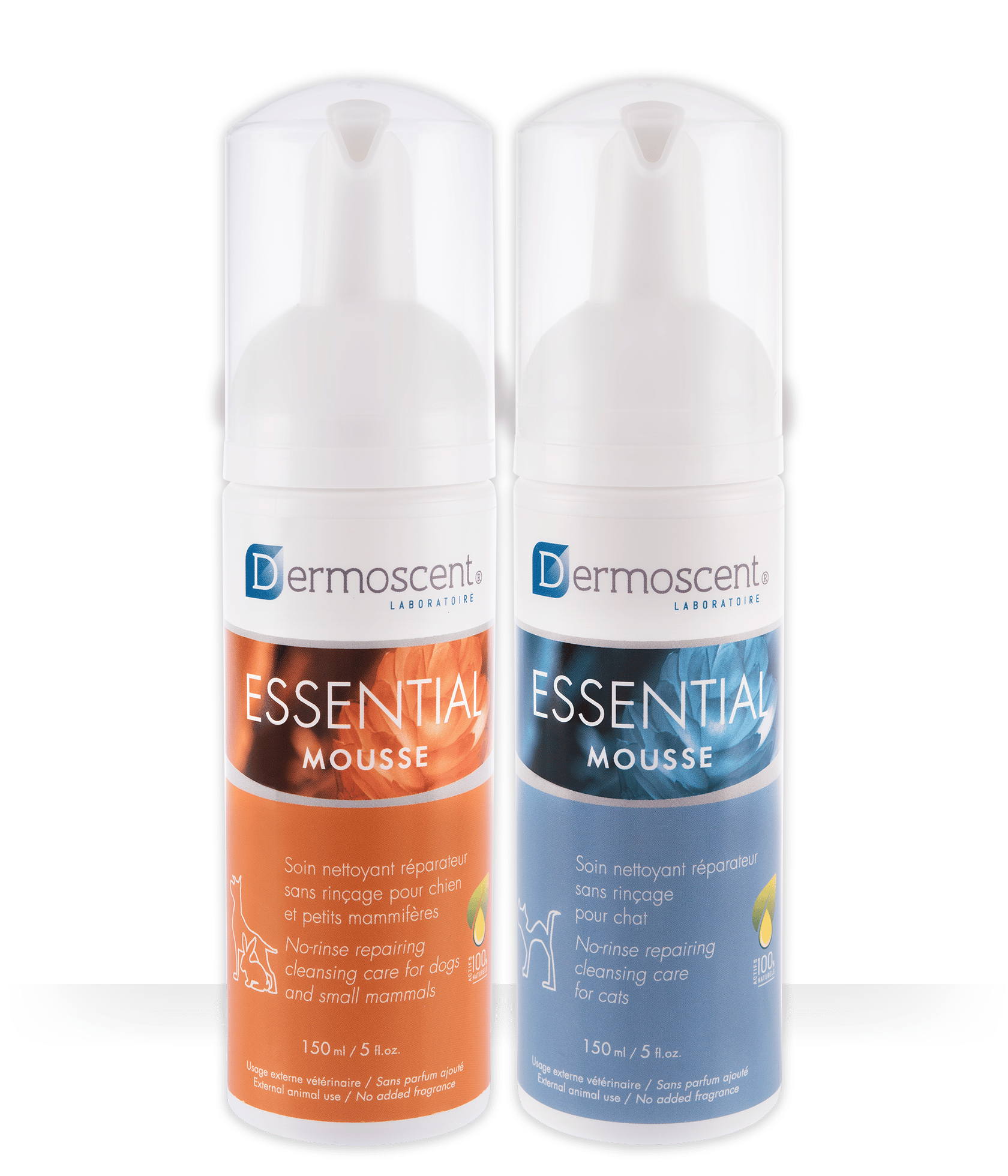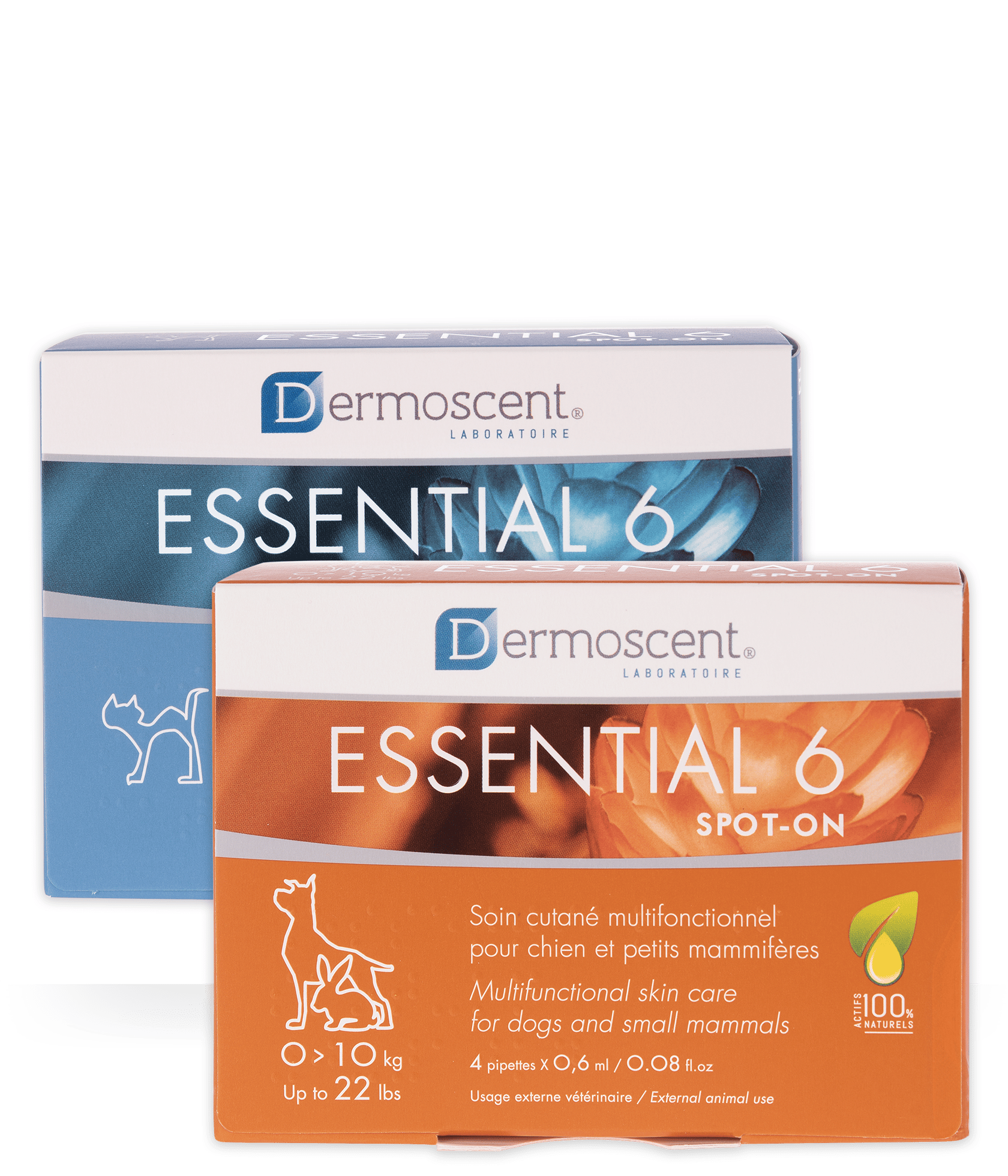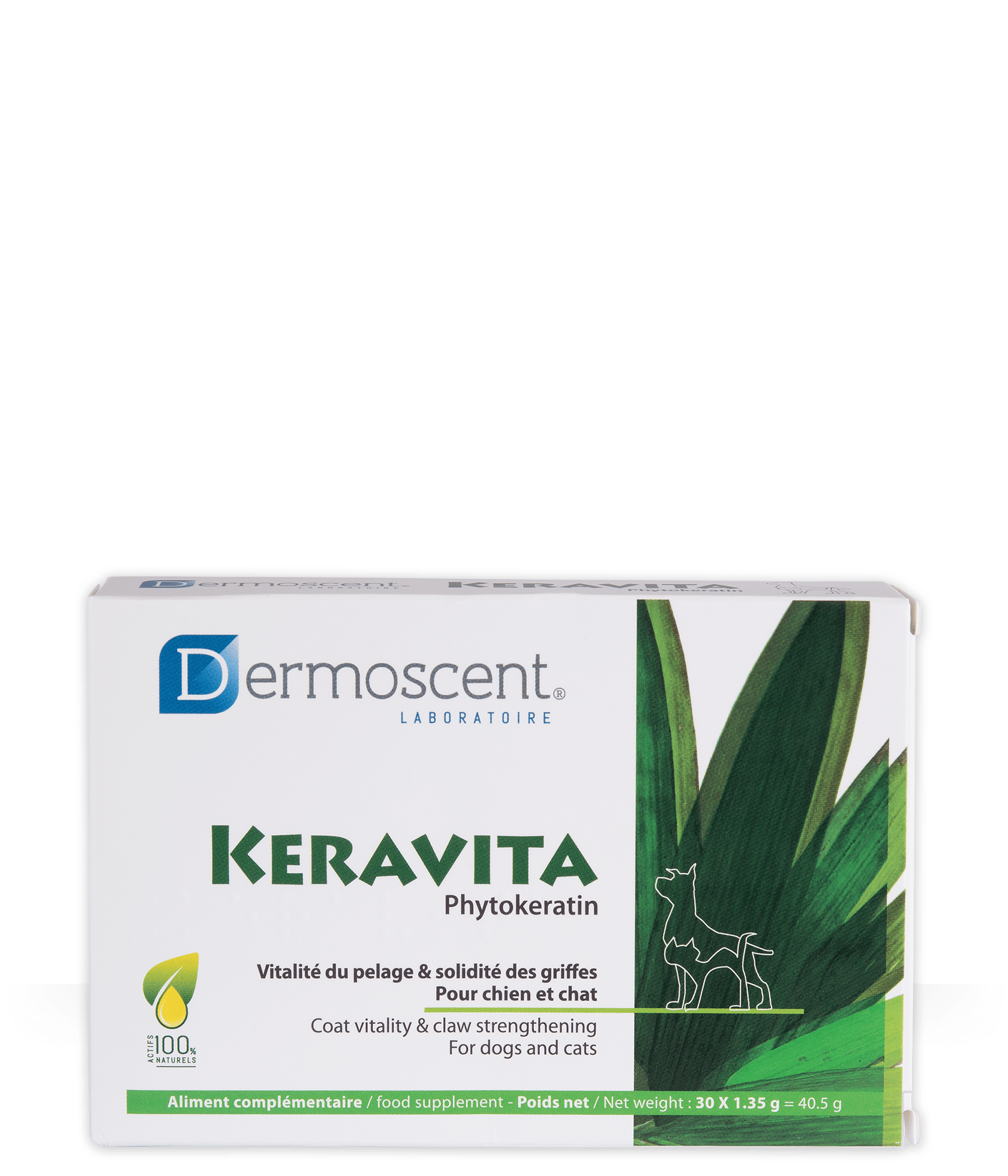How to best control the hair loss of your cat or your dog
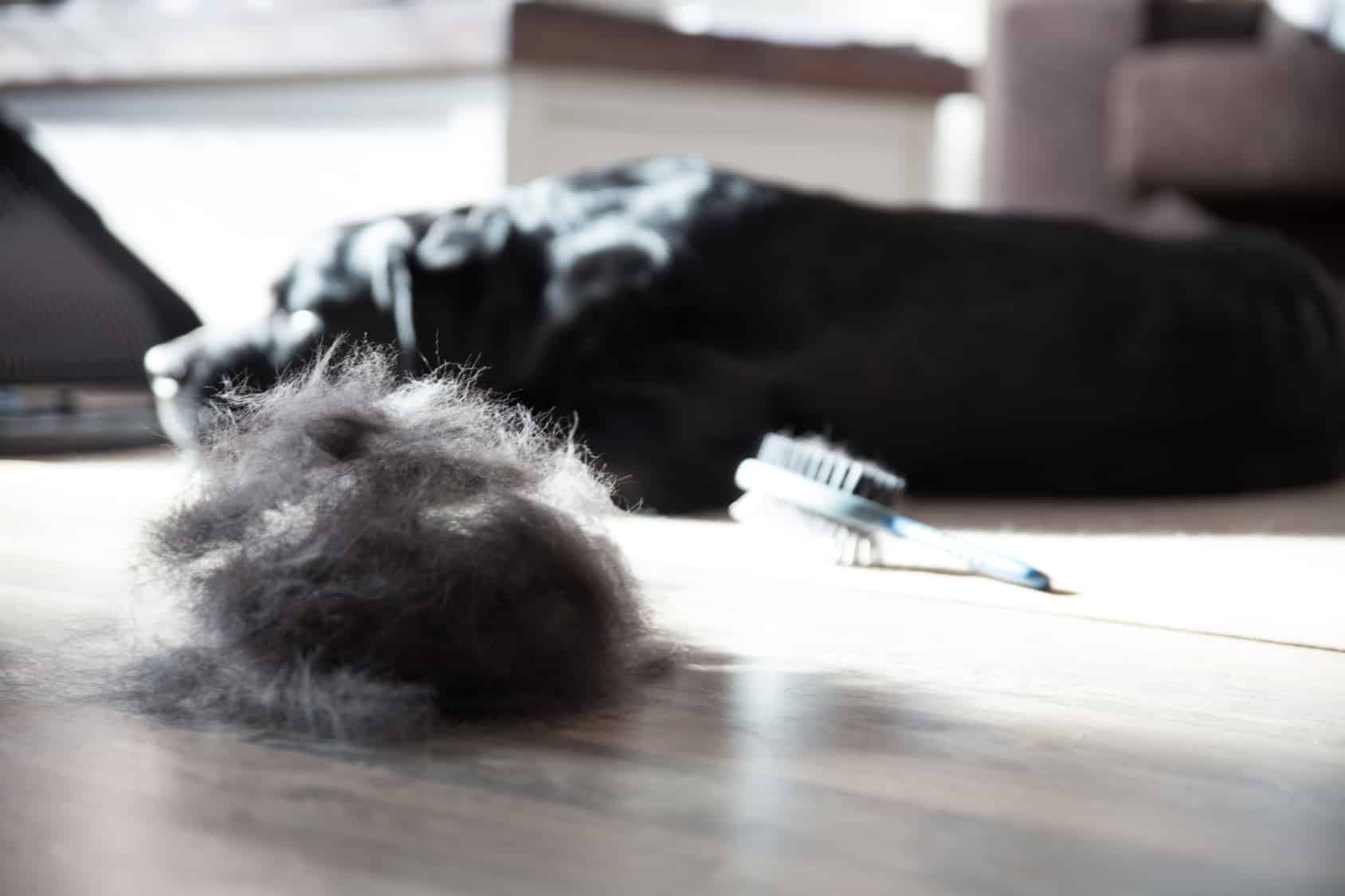
Hair loss in our pets is a natural phenomenon linked to temperature and light. But when should you worry about excessive hair loss?
Is it just natural molting or is it abnormal hair loss?
Each hair follicle is a microscopic sac located in the dermis and epidermis where hair grows. It usually contains several types of hair:
- Primary hair (bristle and guard hair): coarse to the touch and present all over your pet’s body, they protect them against bad weather and give coat color.
- Secondary hair: also called down, this very fine, dense undercoat maintains a balanced body temperature.
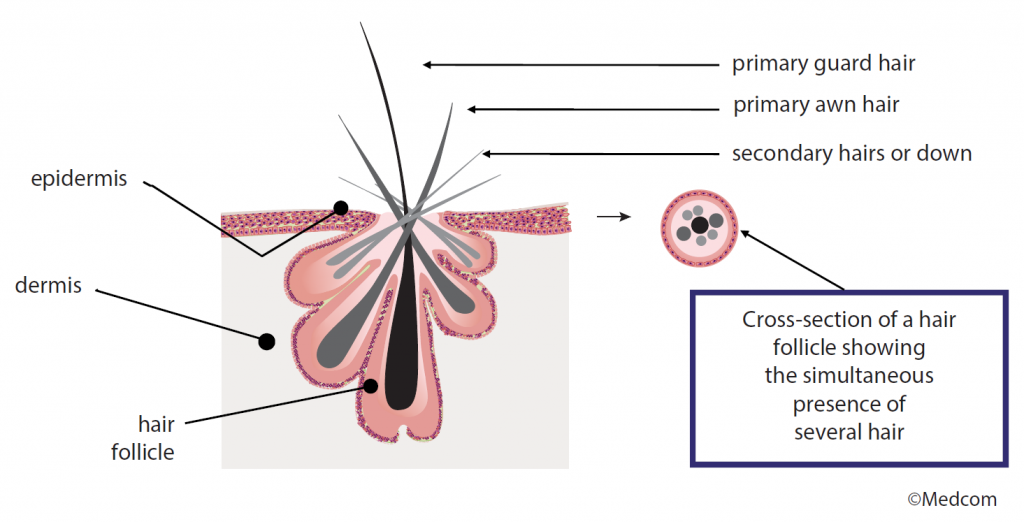
The activity of a hair follicle follows a three-step cycle:
- Growth period: the hair develops and gradually emerges from the epidermis
- Intermediate period: growth stabilizes
- Hair loss period: the hair falls out and is replaced by a new one
In the spring and the fall, dogs and cats experience a common phenomenon, called molting, which leads to significant hair loss. The undercoat is renewed to adapt to the season: it becomes thicker in winter and lighter in summer.
However, living in confinement in an apartment disrupts the natural cycle of the hair and might lead to a false molting. Indeed, living under the same conditions of temperature and light intensity throughout the seasons would thus encourage constant hair loss all year long.
On the other hand, depending on their breed, dogs have a relatively significant proportion of primary and secondary hairs, with varying periods of growth. Some breeds, such as the husky or the chow-chow, experience a fairly short hair renewal cycle, resulting in episodes of major seasonal molting. In contrast, the Yorkshire terrier and the poodle have long growth cycles leading to moderate hair loss.
Excessive hair loss: the main reasons
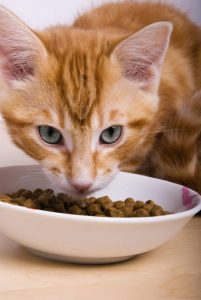 Does your pet have a balanced diet?
Does your pet have a balanced diet?
A thin, sparse coat often reveals deficiencies in vitamins, essential fatty acids and trace elements. Only a good diet will solve this problem.
Is it a kerato-seborrheic condition?
Sebum is meant to sheathe hair and make it shine. But when produced in excess, it makes the coat greasy and encourages excessive hair loss. The same applies to very dry hair.
Is it a symptom of some form of disease?
Some symptoms, such as itching, hairless patches and/or redness, may accompany excessive hair loss.
It is important to consult your veterinarian in order to identify any particular ailment (of parasitic, hormonal or allergic origin).
Could it even be a behavioral problem?
Loneliness and changes in the environment (newcomers at home, moving to a new house, etc.) affect both dogs and cats to lead potential anxiety.
Stressed animals might try to soothe themselves by over-licking or pulling their hair out. Your vet could help by recommending solutions to soothe your pet, so don’t hesitate to ask for advice.
No more hair tufts
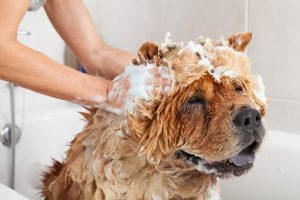
A tailored care routine
Daily brushing of your pet removes redundant down. This is particularly important for cats as it reduces the risk of ingesting hairballs, which can be very dangerous.
In addition, a bath given at reasonable intervals removes dirt and dead hair on the surface from the skin, while protecting the epidermis. A qualitative shampoo with a pH adapted to your pet’s skin should always be used.
Very worthwhile food supplements
Food supplements specially intended for the appendages not only reduce hair loss but also promote hair regrowth. They generally contain vitamins (A, F, biotin), sulfur compounds, zinc and/or essential fatty acids (EFAs), such as omega 3 and 6.

